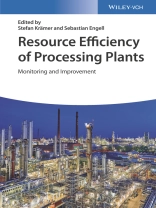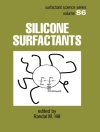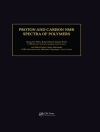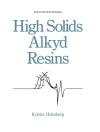This monograph provides foundations, methods, guidelines and examples for monitoring and improving resource efficiency during the operation of processing plants and for improving their design.
The measures taken to improve their energy and resource efficiency are strongly influenced by regulations and standards which are covered in Part I of this book. Without changing the actual processing equipment, the way how the processes are operated can have a strong influence on the resource efficiency of the plants and this potential can be exploited with much smaller investments than needed for the introduction of new process technologies. This aspect is the focus of Part II. In Part III we discuss physical changes of the process technology such as heat integration, synthesis and realization of optimal processes, and industrial symbiosis.
The last part deals with the people that are needed to make these changes possible and discusses the path towards a resource efficiency culture.
Written with industrial solutions in mind, this text will benefit practitioners as well as the academic community.
Jadual kandungan
Preface xvii
Part I Resource Efficiency Metrics and Standardised Management Systems 1
1 Energy and Resource Efficiency in the Process Industries 3
Stefan Krämer and Sebastian Engell
1.1 Introduction 3
1.2 Energy and Resources 4
1.2.1 What Do We Mean by Energy and Resources? 4
1.2.2 Classification of Energy and Resources 5
1.3 Energy and Resource Efficiency 6
1.4 Evaluation of Energy and Resource Efficiency 6
1.5 Evaluation of Energy and Resource Efficiency in Real Time 8
1.6 The Chemical and Process Industry 8
1.6.1 Introduction 8
1.6.2 The Structure of the EU Chemical Industry 9
1.6.3 Energy and Raw Material Use of the Chemical Industry 9
1.7 Recent and Potential Improvements in Energy and Resource Consumption of the Chemical and Process Industries 10
1.8 What Can Be Done to Further Improve the Resource Efficiency of the Process Industry? 11
1.8.1 Make a Plan, Set Targets and Validate the Achievements 11
1.8.2 Measure and Improve Operations 12
1.8.3 Improve the Process 14
1.8.4 Integrate with Other Industrial Sectors and with the Regional Municipal Environment 15
1.8.5 Don’t Forget the People 15
1.9 Conclusions 15
References 16
2 Standards, Regulations and Requirements Concerning Energy and Resource Efficiency 19
Jan U. Lieback, Jochen Buser, David Kroll, Nico Behrendt, and Seán Oppermann
2.1 Introducing a Long-Term Development 19
2.1.1 Historical Background and Reasoning 19
2.1.2 Relation of CO2 Emissions and Energy Efficiency 20
2.1.3 EU Goals for Energy Efficiency 21
2.1.4 Energy Efficiency Worldwide 22
2.1.5 Growing EU Concern on Resource Efficiency 23
2.2 Normative Approaches on Energy and Resource Efficiency 24
2.2.1 Management Systems, Aim and Construction 24
2.2.2 From Precursors towards the ISO 50001 25
2.2.3 Basics of ISO 50001 and Dissemination 26
2.2.4 Energy Efficiency Developments in Germany 27
2.2.5 ISO 50001 and ISO 50004 28
2.2.5.1 ISO 50001 28
2.2.5.2 ISO 50004 28
2.2.6 ISO 50003 and Companions ISO 50006 and 50015 29
2.2.7 EN 16247 and ISO 50002 29
2.2.8 New Standards 31
2.2.9 Normative Approaches Regarding Resource Efficiency 32
2.2.10 Perspectives 33
2.3 Achievements of Energy and Resource Management 34
2.3.1 Energy Baseline (En B) and Energy Performance Indicators (En PIs), Controlling Efficiency Improvement 34
2.3.2 Developing En PIs, Measuring and Verification of Energy Performance 34
2.3.3 Hierarchy of Measures 36
2.3.4 Energy and Resource Efficiency in the Context of Energy Management 36
2.3.5 Examples of Measures 37
2.4 Conclusion 38
References 39
3 Energy and Resource Efficiency Reporting 45
Marjukka Kujanpää, Tiina Pajula, and Helena Wessman-Jääskeläinen
3.1 Executive Summary 45
3.2 Introduction 45
3.3 Obligatory Reporting Mechanisms 47
3.3.1 EU Directive on Industrial Emissions (IED) 47
3.3.2 EU Directive on Non-Financial Reporting 48
3.4 Voluntary Reporting Mechanisms 49
3.4.1 Eco-Management and Audit Scheme (EMAS) 49
3.4.2 OECD Guidelines for Multinational Enterprises 49
3.4.3 UN Global Compact 50
3.4.4 Global Reporting Initiative (GRI) 51
3.4.5 Integrated Reporting and the Framework 52
3.4.6 GHG protocol 54
3.4.7 ISO 14000 Series 54
3.4.8 Environmental Labels 55
3.4.9 Environmental Product Footprint and Organisational Footprint (PEF, OEF) 59
3.5 Other Reporting Mechanisms 59
3.5.1 Key Performance Indicators 59
3.6 Summary of the Energy and Resource Efficiency Reporting Requirements 60
References 61
4 Energy Efficiency Audits 65
Gunther Windecker
4.1 Introduction 65
4.2 Stage 1: Current Energy Status 66
4.3 Stage 2: Basic Analysis 67
4.4 Stage 3: Detailed Analysis and Collection of Ideas 69
4.5 Stage 4: Evaluation and Selection of Measures 72
4.6 Stage 5: Realization and Monitoring 76
4.7 Extension to Resource Efficiency 77
4.8 Closing Remark 77
References 78
Part II Monitoring and Improvement of the Resource Efficiency through Improved Process Operations 79
5 Real-Time Performance Indicators for Energy and Resource Efficiency in Continuous and Batch Processing 81
Benedikt Beisheim, Marc Kalliski, Daniel Ackerschott, Sebastian Engell, and Stefan Krämer
5.1 Introduction 81
5.2 Real-Time Resource Efficiency Indicators 82
5.2.1 Resource Efficiency 82
5.2.2 REI as (Key) Performance Indicators ((K)PI) 83
5.2.3 Real-Time Resource Efficiency Monitoring 84
5.2.4 Principles That Guide the Definition of Real-Time REI (Adapted from Ref. [10]) 84
5.2.4.1 Gate-to-Gate Approach 85
5.2.4.2 Based on Material and Energy Flow Analysis 85
5.2.4.3 Resource and Output Specific to a Potential for Meaningful Aggregation 85
5.2.4.4 Normalize to the Best Possible Operation 86
5.2.4.5 Consider (Long-Term) Storage Effects 86
5.2.4.6 Include Environmental Impact 86
5.2.4.7 Hierarchy of Indicators – From the Whole Site to a Single Apparatus 87
5.2.4.8 Focus on Technical Performance Independent of Economic Factors 87
5.2.4.9 Extensible to Life-Cycle Analysis (LCA) 87
5.2.5 Extension to LCA and Reporting 87
5.2.6 Real-Time Resource Efficiency Indicators: Generic Indicators 88
5.2.7 Definition of Baselines: Average and Best Cases 88
5.3 Evaluation of the Suitability of Resource Efficiency Indicators 91
5.3.1 Basic Procedure 91
5.3.2 The MORE RACER Evaluation Framework 93
5.3.3 Application of the RACER Framework 95
5.4 Hierarchical Modelling of Continuous Production Complexes 96
5.4.1 Introduction to the Plant Hierarchy 96
5.4.2 Aggregation and Contribution Calculation 98
5.4.2.1 General Performance Deviation 98
5.4.2.2 Aggregation 98
5.4.2.3 Performance Contribution of Lower Levels 99
5.4.2.4 Load Contribution of Lower Levels 100
5.4.2.5 Contribution of Other Factors 101
5.4.2.6 Overall Result 102
5.4.2.7 Illustrative Example 103
5.4.3 Integration of Utility and Energy Provider 105
5.4.4 Product-Oriented REI 106
5.4.5 Simulated Example 107
5.5 Batch Production 112
5.5.1 Batch Resource Efficiency Indicators 113
5.5.1.1 Energy Efficiency 114
5.5.1.2 Material Efficiency 115
5.5.1.3 Water and Waste Efficiency 116
5.5.2 REI for Key Production Phases 116
5.5.2.1 Reaction Efficiency 117
5.5.2.2 Purification Efficiency 117
5.5.3 REI for Plant-Wide Contributions to Resource Efficiency 118
5.5.4 Rules for the Propagation and Aggregation of REI 119
5.5.4.1 Recycled Materials 119
5.5.5 Uniting and Splitting of Batches 119
5.6 Integrated Batch and Continuous Production 122
5.6.1 Transition from Batch to Continuous Production 122
5.6.2 Transition from Continuous to Batch Production 124
5.7 Conclusions 124
Appendix: Decomposition of ΔBDPL 125
References 126
6 Sensing Technology 129
Alejandro Rosales and Oonagh Mc Nerney
6.1 Introduction 129
6.2 Sensing: General Considerations and Challenges 131
6.2.1 Precision 132
6.2.2 Accuracy 132
6.2.3 The Limitations of Any Measurement Method Due to the Inadequacy of the Theoretical Model for Matching the Real-World Conditions 134
6.2.4 Sampling: The Nature of the Interaction Between the Bodies to be Measured and the Measurement Instrument is a Key Consideration for Inline Monitoring 135
6.3 Energy Saving by Means of Accurate Metering 136
6.4 Latest Advancements in Spectroscopy Technology for Process-Monitoring-Based Efficiency 137
6.4.1 Introduction and State of the Art 137
6.4.2 Hyperspectral Imaging 138
6.4.3 Time-Gated Raman 139
6.5 Process Analytical Technologies (PAT) 142
6.6 Soft Sensors. Access to the “Truth” Distributed Among a Plurality of Simple Sensors 146
6.7 MEMS-Based Sensors. Smart Sensors 147
6.8 Future Trends in Sensing with Promising Impact on Reliable Process Monitoring 148
6.8.1 Quantum Cascade Lasers (QCLs) 149
6.8.2 Graphene-Based Sensors 150
6.9 European R&D: Driving Forward Sensing Advancements 151
6.10 Conclusion 152
References 154
7 Information Technology and Structuring of Information for Resource Efficiency Analysis and Real-Time Reporting 159
Udo Enste
7.1 Introduction 159
7.2 Information Technology in the Process Industries 159
7.3 Resource Flow Modelling and Structuring of Information 163
7.3.1 Resource Managed Units 163
7.3.2 3-Tier Information Modelling Approach 164
7.4 From Formulae to Runtime Software 167
7.4.1 Recommended System Architecture – Building Context Awareness 167
7.4.2 REI Application Design Process 168
7.5 Industrial Installations 171
7.5.1 Example 1: Batch-Continuous-Process 171
7.5.2 Example 2: Integrated Chemical Production Complex 175
7.6 Summary and Conclusions 178
References 179
8 Data Pre-treatment 181
Cesar de Prada and Daniel Sarabia
8.1 Measurement Errors and Variable Estimation 182
8.2 Data Reconciliation 188
8.3 Gross Errors Detection and Removal 193
8.3.1 Statistical Methods for Gross Errors Detection 195
8.3.2 Robust M-Estimators 202
8.4 Data Pre-treatment and Steady-State Detection 205
8.5 Dynamic Data Reconciliation 208
8.6 Conclusions 209
References 210
9 REI-Based Decision Support 211
Marc Kalliski, Benedikt Beisheim, Daniel Ackerschott, Stefan Krämer, and Sebastian Engell
9.1 Introduction 211
9.2 Visualization 213
9.2.1 Principles of Human–Machine Interface Engineering 213
9.2.2 REI Visualization Concepts 215
9.2.2.1 Indicators Included in Plant Structure 215
9.2.2.2 Sankey Diagrams 215
9.2.2.3 Bullet Chart 216
9.2.2.4 Stacked Bars and Stacked Area Plots 217
9.2.2.5 Difference Charts and Sparklines 218
9.2.2.6 Aggregated Tiles 220
9.2.2.7 Selection of Visualization Elements for Efficient Concepts 220
9.2.3 Process Monitoring 221
9.2.3.1 Dashboard Concept for the Sugar Plant Case Study 223
9.3 What-If Analysis 224
9.3.1 Introduction 224
9.3.2 Requirements 225
9.3.2.1 Graphical Guidance 225
9.3.2.2 Flexibility 225
9.3.2.3 Analysis of Results 226
9.3.2.4 Visual Feedback 226
9.3.2.5 Scenario Database 226
9.3.3 Exemplary Application 226
9.4 Optimization 229
9.4.1 Introduction 229
9.4.2 Requirements 230
9.4.2.1 Real-Time Performance 231
9.4.2.2 Analysis of Optima 231
9.4.2.3 Multicriterial Optimization 231
9.4.3 Exemplary Application 232
9.5 Conclusions 235
References 236
10 Advanced Process Control for Maximum Resource Efficiency 239
André Kilian
10.1 Introduction 239
10.2 The Importance of Constraint Control 239
10.2.1 Operating Strategy for a Simple Depropanizer Column: Motivating Example 240
10.2.2 Graphical Representation of Constraints 244
10.2.3 Additive Nature of Constraint Give-Away 245
10.2.4 The Need for Closed-Loop Optimization 246
10.3 What is Advanced Process Control? 247
10.3.1 The Control Pyramid 247
10.3.2 Common Features of MPC Technologies 249
10.4 Benefits and Requirements for Success 254
10.4.1 Achieving Financial Benefits 254
10.4.2 Justification and Benefit Estimation 256
10.5 Requirements for success 258
10.6 Conclusion 262
References 263
11 Real-Time Optimization (RTO) Systems 265
Cesar de Prada and José L. Pitarch
11.1 Introduction 265
11.2 RTO Systems 268
11.3 Optimization Methods and Tools 274
11.3.1 Non-Linear Programming 275
11.3.1.1 KKT Optimality Conditions 276
11.3.1.2 Sequential Quadratic Programming (SQP) 277
11.3.1.3 Interior Point (IP) Methods 278
11.3.2 Software and Practice 279
11.3.3 Dynamic Optimization 280
11.4 Application Example: RTO in a Multiple-Effect Evaporation Process 281
11.4.1 Steady-State Modelling 283
11.4.2 Experimental Customization 285
11.4.2.1 Data Reconciliation 286
11.4.2.2 Proposed Procedure 286
11.4.3 Optimal Operation 289
11.4.4 Some Experimental Results 290
11.5 Conclusions 291
References 291
12 Demand Side Response (DSR) for Improving Resource Efficiency beyond Single Plants 293
Iiro Harjunkoski, Lennart Merkert, and Jan Schlake
12.1 Executive Summary 293
12.2 Introduction 293
12.2.1 Trends 294
12.2.2 Demand Side Response to Stabilize the Electricity Grid 295
12.2.3 History of Demand Side Response 296
12.3 Structure of this Chapter 297
12.4 Motivation 297
12.4.1 Demand for Flexibility and Alternatives to Demand Side Response 299
12.4.1.1 Increase Flexibility via Additional Energy Storage Capacity 299
12.4.1.2 Increase Flexibility via Additional Conventional Power Plants 299
12.4.1.3 Increase Flexibility through Active Control of Renewable Energy Sources 299
12.4.1.4 Increase Flexibility through an Increased Grid Capacity 300
12.4.1.5 Increase Flexibility through Alternative Market Options 300
12.4.2 Types of Demand Side Response Measures 300
12.4.3 Market Drivers and Market Barriers 300
12.5 Demand Side Response at Large Consumers 301
12.5.1 Energy Efficiency (EE) 301
12.5.1.1 Example: Use of More Energy-Efficient Pumps 301
12.5.2 Load Management – Energy Demand Changes by Enhanced Planning Capability 304
12.5.3 DSR Triggers 304
12.5.3.1 Utility Trigger and Price Changes 305
12.5.3.2 Energy Shortage 305
12.5.3.3 Energy Portfolio Optimization 305
12.5.4 Types of Demand Side Response 306
12.5.4.1 Peak Shaving 309
12.5.4.2 Load Shedding 309
12.5.4.3 Load Shifting 309
12.5.4.4 Ancillary Services 309
12.6 Valorization 310
12.6.1 Industrial Examples of Demand Side Response 311
12.6.2 Example: Steel Production 312
12.7 Summary and Outlook 313
References 314
13 Energy Efficiency Improvement using STRUCTese TM 317
Guido Dünnebier, Matthias Böhm, Christian Drumm, Felix Hanisch, and Gerhard Then
13.1 Introduction 318
13.1.1 STRUCTese TM Management System 321
13.1.2 Energy Efficiency Check and Improvement Plan 323
13.1.3 Energy Loss Cascade and Performance Indicators 327
13.1.4 Online Monitoring and Daily Energy Protocol 336
13.1.5 Implementation Results 338
13.1.6 Open Issues and Research Topics 341
References 343
Part III Improving Resource Efficiency by Process Improvement 345
14 Synthesis of Resource Optimal Chemical Processes 347
Minbo Yang, Jian Gong, and Fengqi You
14.1 Introduction 347
14.1.1 Background and Motivation 347
14.1.2 Resource Optimal Chemical Processes 349
14.2 Heuristic Methods 350
14.2.1 Pinch Technology for Resource Network Integration 350
14.2.2 Other Heuristic Methods for Process Synthesis 352
14.3 Superstructure Optimization Based Method 353
14.3.1 Superstructure Generation 353
14.3.2 Data Extraction 355
14.3.3 Mathematical Model Formulation 356
14.3.3.1 Mass Balance Constraints 356
14.3.3.2 Energy Balance Constraints 358
14.3.3.3 Economic Evaluation Constraints 360
14.3.3.4 Objective Function 361
14.3.4 Solution Methods 362
14.3.5 Applications of Synthesis of Resource Optimal Chemical
Processes 363
14.3.6 Hybrid Methods 364
14.4 Other Impact Factors on Resource Optimal Chemical Processes 365
14.4.1 Environmental Factors 365
14.4.2 Social Factors 366
14.4.3 Uncertainty 366
14.5 Conclusion 366
References 367
15 Optimization-Based Synthesis of Resource-Efficient Utility Systems 373
Björn Bahl, Maike Hennen, Matthias Lampe, Philip Voll, and André Bardow
15.1 Introduction 373
15.2 Definition of Utility Systems 375
15.3 Problem Statement 375
15.4 Modelling 377
15.4.1 Model Complexity 377
15.4.1.1 Time Representation 378
15.4.1.2 Part-Load Performance 379
15.4.2 Decomposition 380
15.4.3 Time-Series Aggregation 381
15.5 Solution Methods for Optimal Synthesis of Utility Systems 382
15.5.1 Superstructure-Based Optimal Synthesis of Utility Systems 383
15.5.2 Superstructure-Free Optimal Synthesis of Utility Systems 385
15.6 Analysis of Multiple Solutions for Decision Support 387
15.6.1 Multi-objective Optimization 388
15.6.2 Near-Optimal Solutions 388
15.6.3 Optimization under Uncertainty 390
15.7 Industrial Case Study 390
15.7.1 Description of the Case Study 391
15.7.2 Economically Optimal Solution 393
15.7.3 Multi-objective Optimization 394
15.7.4 Near-Optimal Solutions 395
15.8 Conclusions for the Utility System Synthesis in Industrial
Practice 397
Acknowledgments 398
References 398
16 A Perspective on Process Integration 403
Ivan Kantor, Nasibeh Pouransari, and François Maréchal
16.1 Overview 403
16.2 Introduction 404
16.3 Heat Integration 405
16.3.1 Determining ΔTmin 406
16.3.2 Composite and Grand Composite Curves 409
16.3.3 Identifying Penalising Heat Exchangers 411
16.3.4 Improving the Heat Recovery Targets 412
16.3.5 Caste Study I: Application of Advanced Heat Integration Technologies 413
16.4 Energy and Resource Integration 416
16.4.1 Multi-Level Energy Requirement Definition 418
16.4.2 Problem Formulation 419
16.4.3 Heat Cascade 420
16.4.4 Mass Integration 420
16.4.5 Electricity 423
16.4.6 Transportation 424
16.4.7 Investment and Operating Costs 425
16.4.8 Alternative Objectives 428
16.4.9 Caste Study II: Site-Scale Integration and Multi-Level Energy Requirement Definition 430
16.4.9.1 Single Process Integration (SPI) 430
16.4.9.2 Total Site Integration (TSI) 432
16.4.9.3 Heat Recovery Improvement Potentials 432
16.4.9.4 Integration and Optimization of Energy Conversion Units 435
16.5 Summary 437
References 439
17 Industrial Symbiosis 441
Greet Van Eetvelde
17.1 Syn-Bios and Syn-Ergon 441
17.1.1 Economies of Scale and Scope 441
17.1.2 Economies in Transition 444
17.1.3 Low-Carbon Economies 447
17.2 Industrial Symbiosis 449
17.2.1 State of the Art – IS Practice 450
17.2.1.1 IS Parks 450
17.2.1.2 IS Technologies 451
17.2.1.3 IS Services 453
17.2.1.4 IS Policies 454
17.2.2 State of the Art – IS Research 454
17.2.3 Innovation Potential 458
17.2.4 The EU Perspective 460
17.3 Business Clustering 460
17.3.1 Business Parks and Park Management 461
17.3.2 Total Site Integration and Site Management 462
17.3.3 Cross-Sectorial Clustering and Cluster Management 464
17.4 Conclusions 467
References 467
Part IV Company Culture for Resource Efficiency 471
18 Organizational Culture for Resource Efficiency 473
Klaus Goldbeck and Stefan Krämer
18.1 Introduction 473
18.2 The Basics 474
18.2.1 Trust and Motivation 474
18.2.2 Justice and Fairness 476
18.2.3 Strokes 477
18.2.4 Orientation 479
18.3 Implementation 479
18.3.1 Differentiation 479
18.3.2 The Principles 480
18.3.3 The Desired Result 481
18.3.4 The Integration 485
18.3.5 The Standard 486
18.3.6 The Measures 486
18.3.7 The Rules 487
18.3.8 The Performance 488
18.3.9 Resistance 488
18.3.10 Incentives 489
18.3.11 Feedback Loops 491
18.4 Giving It a Meaning 491
18.5 Closing Remarks 492
Acknowledgments 493
References 493
Index 495
Mengenai Pengarang
Dr. Stefan Krämer is Energy Manager at the petrochemical site of INEOS in Köln, Germany. He joined INEOS in 2004 as an Advanced Control Engineer, later managed over a group of APC and DCS Engineers and in his current role is head of a team for energy management and energy optimization. Operating the site wide energy management system, making sure that the power generation and distribution is operated in a commercially optimal way, and coordinating energy and resource efficiency projects is part of his responsibilities. In two EU-funded research projects, the EU FP 7 project MORE and currently the EU Horizon 2020 SPIRE project Co Pro, both dealing with resource efficiency, he acts as Industrial Application Coordinator. Stefan Krämer also co-leads the topic ‘Energy Efficiency’ in the pan-INEOS ‘Carbon and Energy Network’.He is the former chairman of the NAMUR working group on Process Dynamics and Operations and currently the chairman of the NAMUR working group on Energy Efficiency and member of a sister working group in VIK.Stefan Krämer received his Ph D at Technische Universität Dortmund (Germany), where he still teaches Batch Process Operation. He managed to build a reputation in the area of process control and energy efficiency and keeps publishing practical and scientific contributions in the areas of process modelling, process control, energy management and energy and resource efficiency.
Dr. Sebastian Engell has been Professor and Chair of Process Dynamics and Operations in the Department of Biochemical and Chemical Engineering at Technische Universität Dortmund (Germany) since 1990.Professor Engell is an internationally renowned scientist in the field of process control and process operations and has published more than 400 scientific papers. He has been involved in several cooperative projects with industry, among others the EU FP 7 projects DYMASOS and MORE, and currently coordinates the EU Horizon 2020 SPIRE project Co Pro – Improved energy and resource efficiency by better coordination of production in the process industries.Professor Engell is a recipient of a European Research Council Advanced Investigator Grant and Fellow of the International Federation of Automatic Control. He received best paper awards from Journal of Process Control in 2007 and Computers and Chemical Engineering in 2016. He also edited the book ‘Logistics of Chemical Production Processes’ published by Wiley-VCH.












